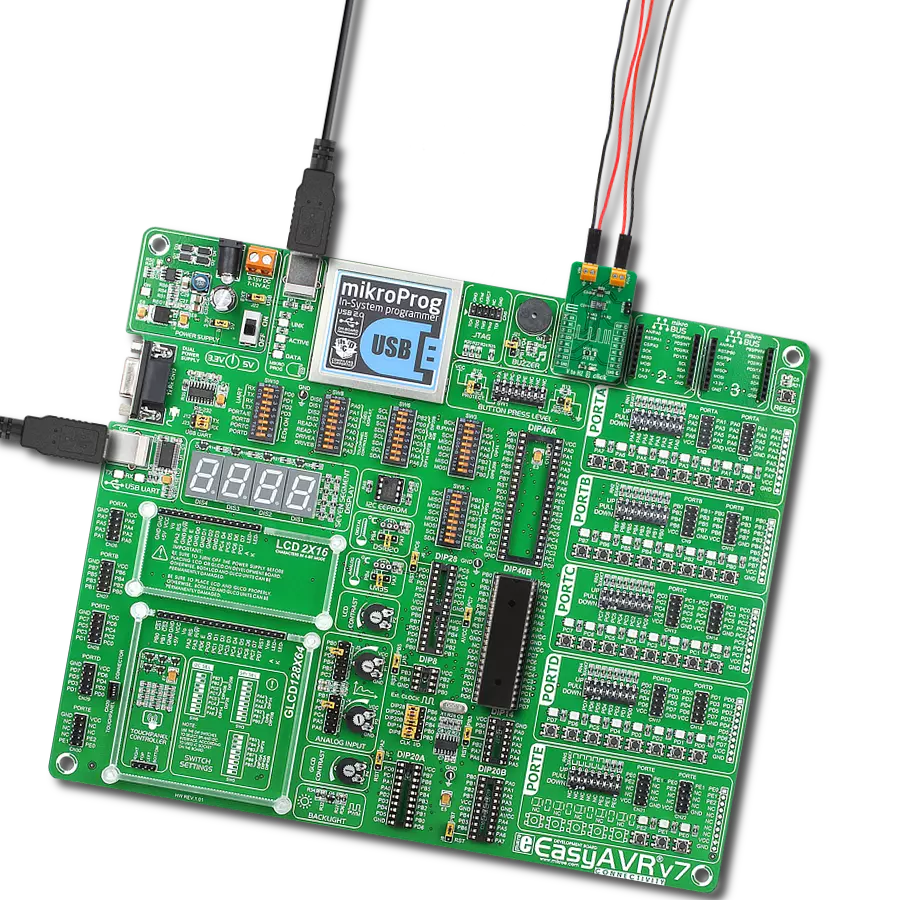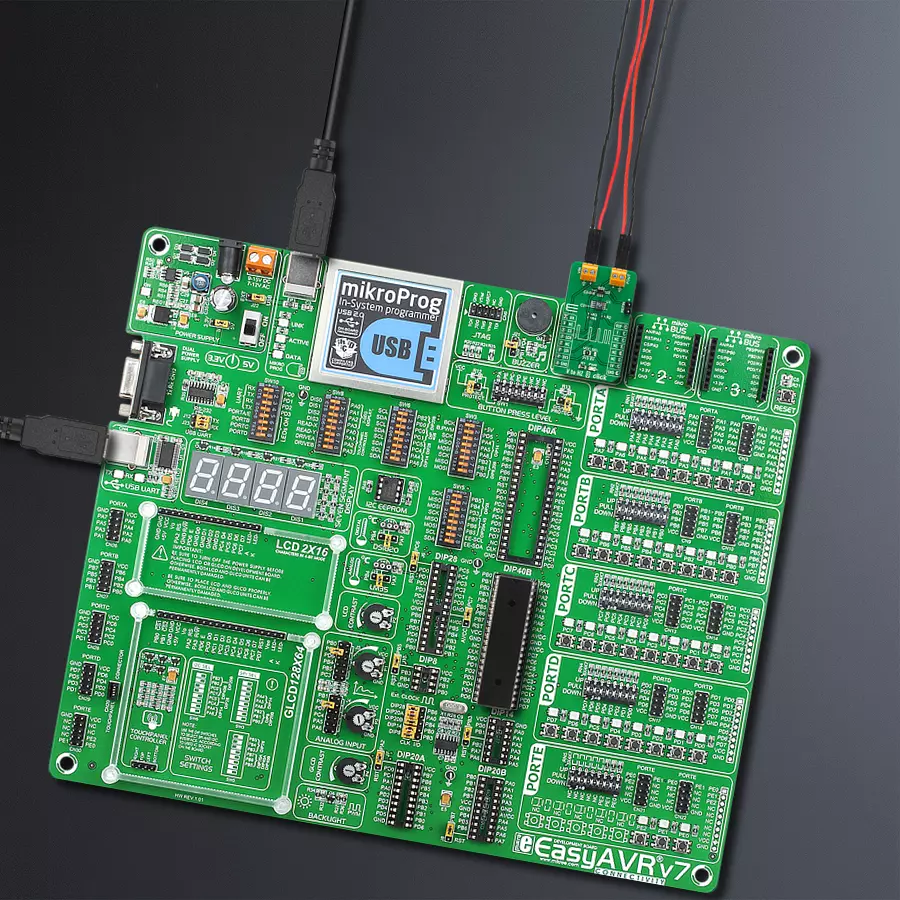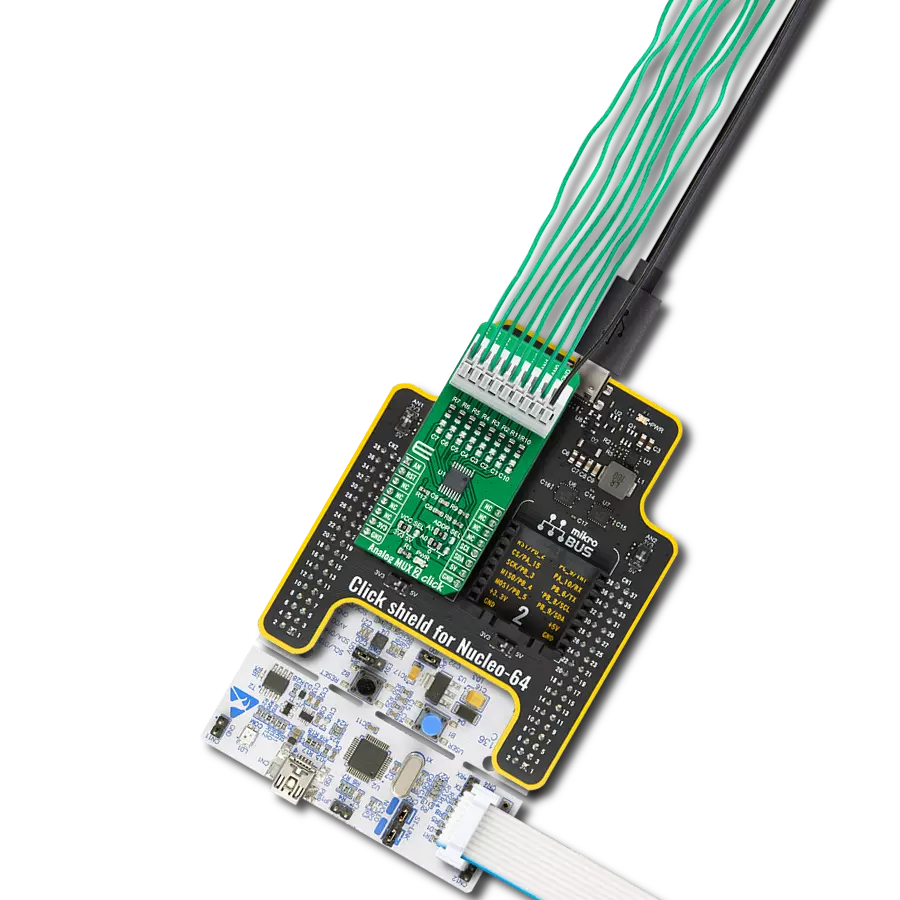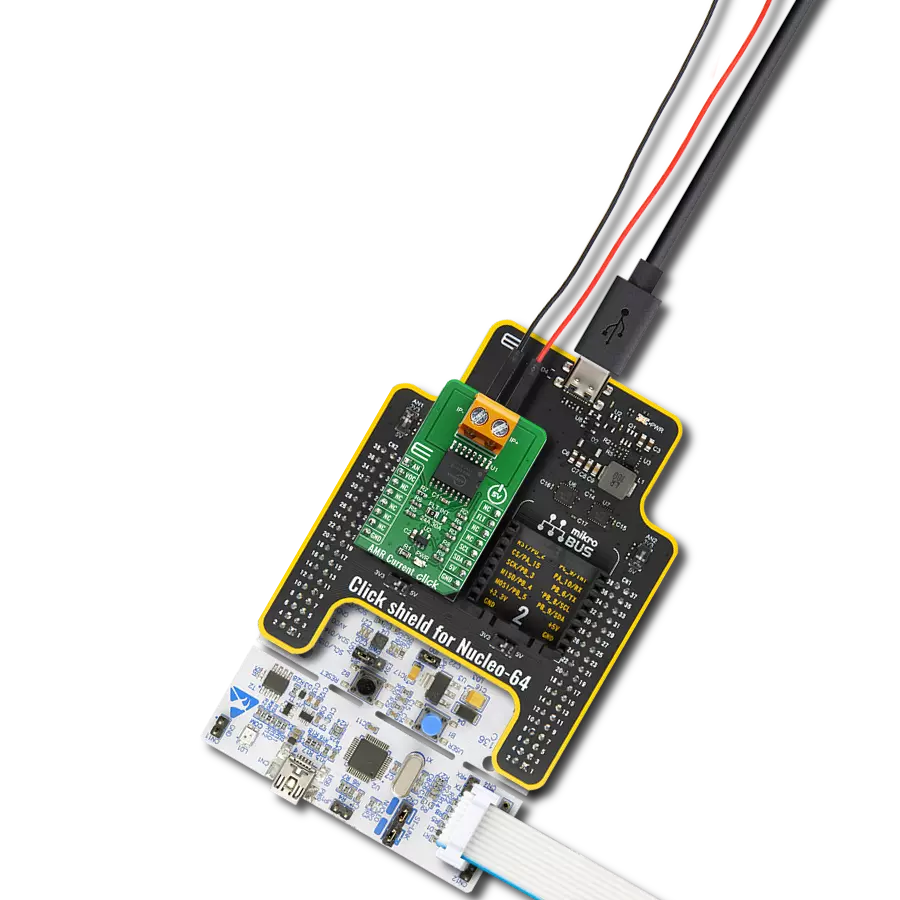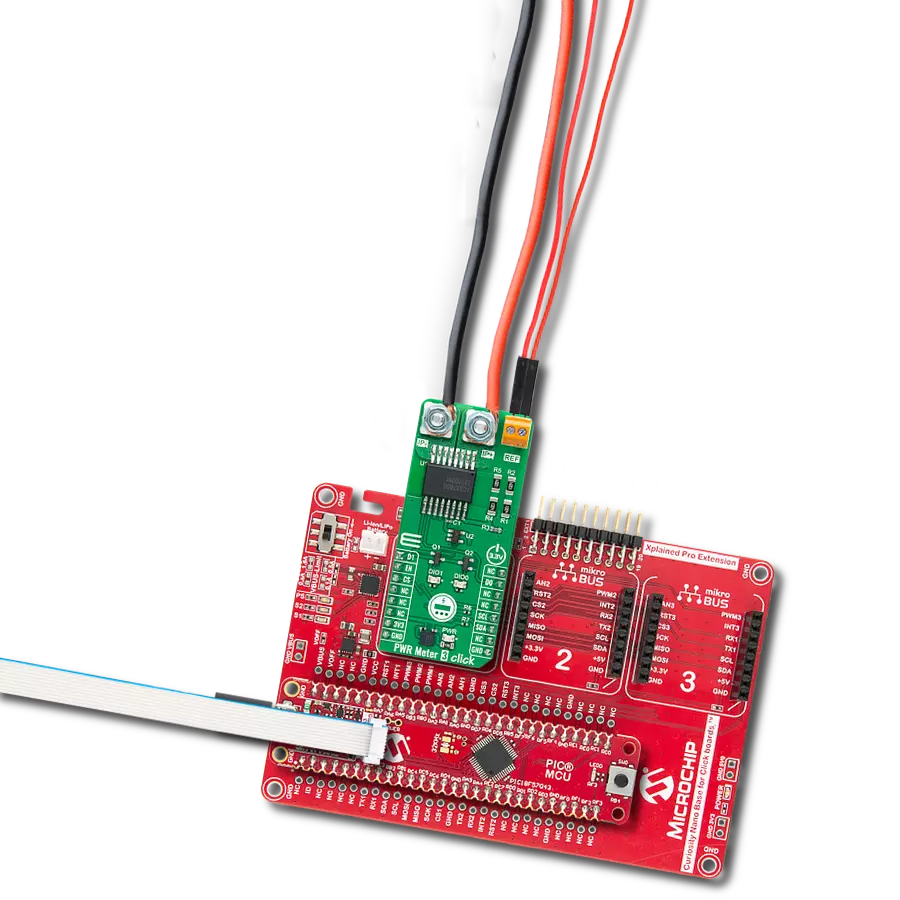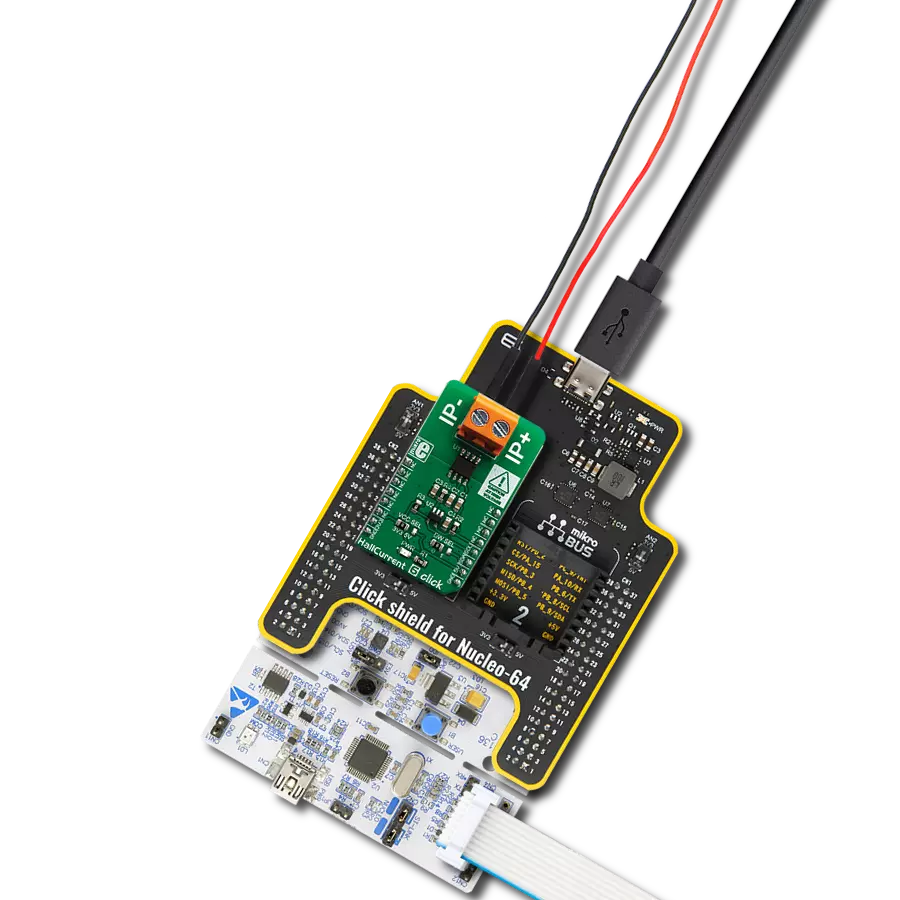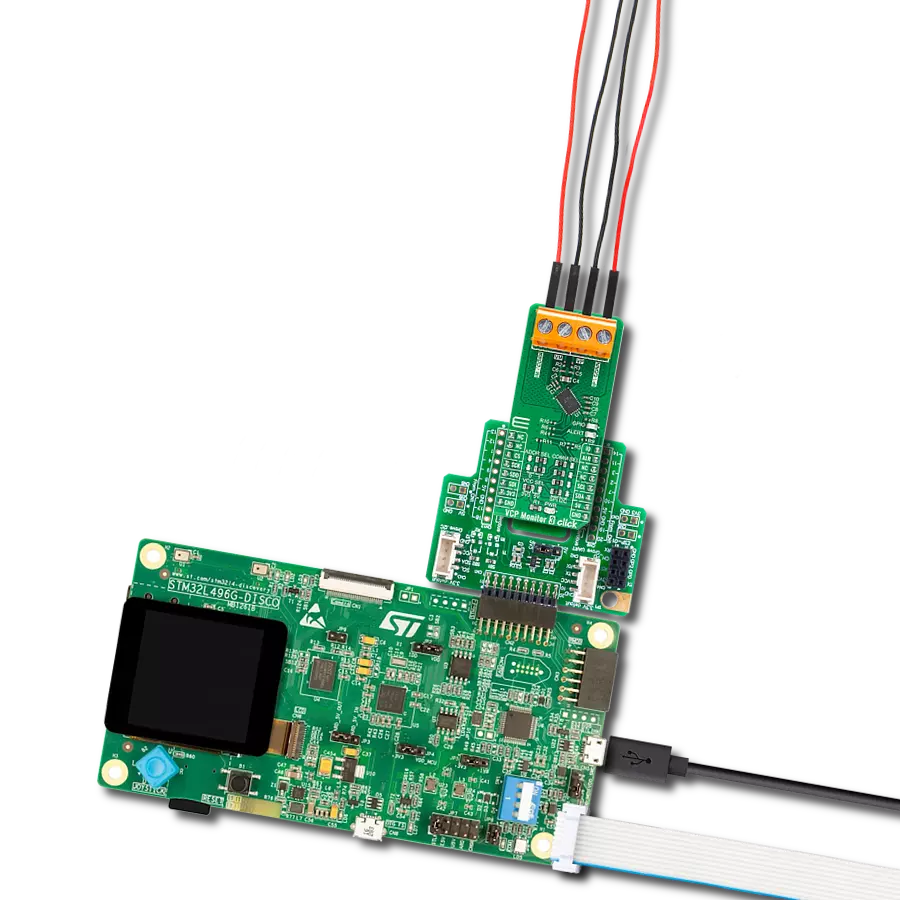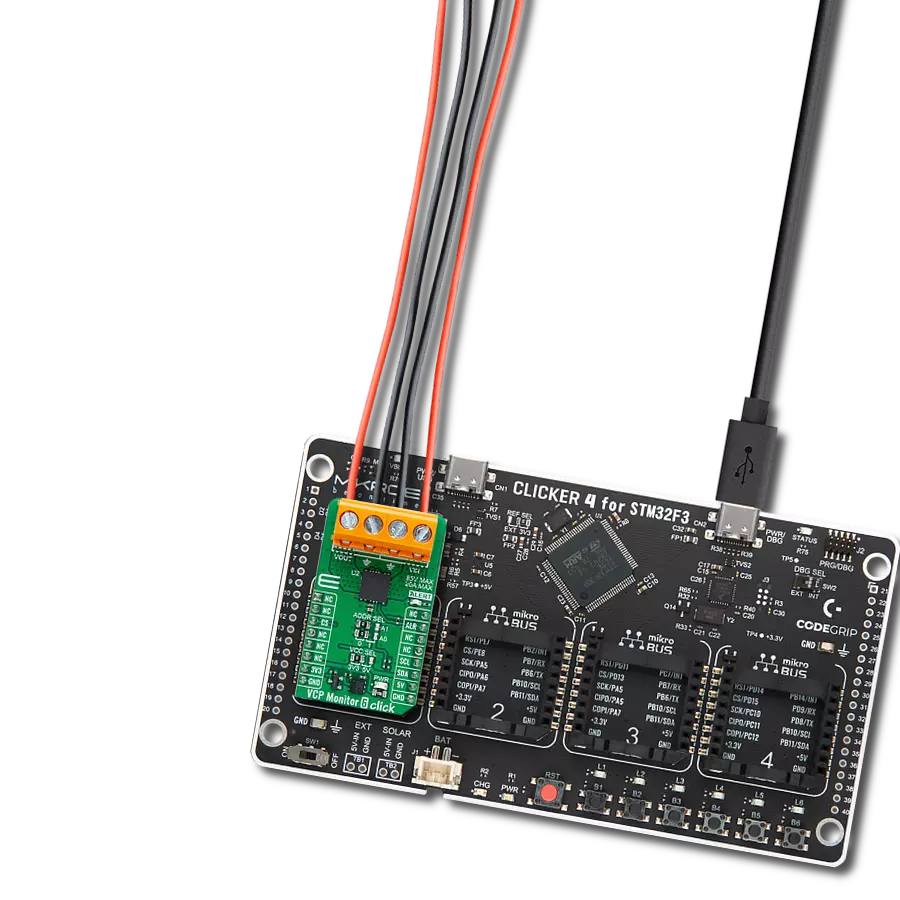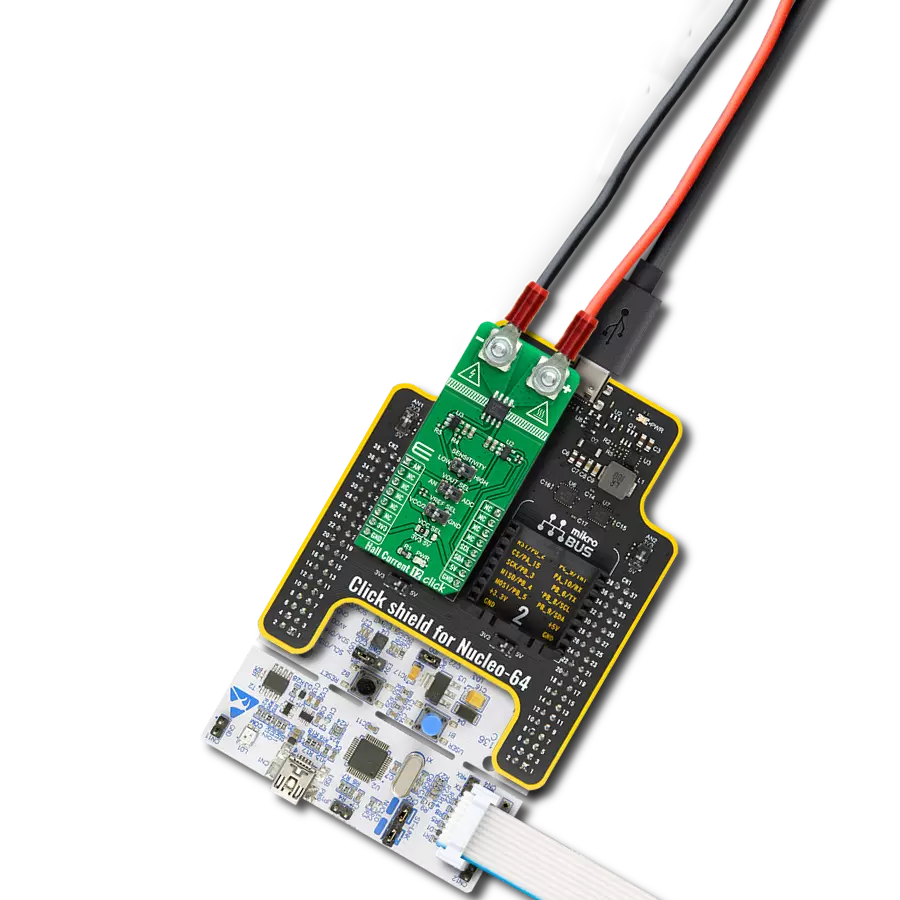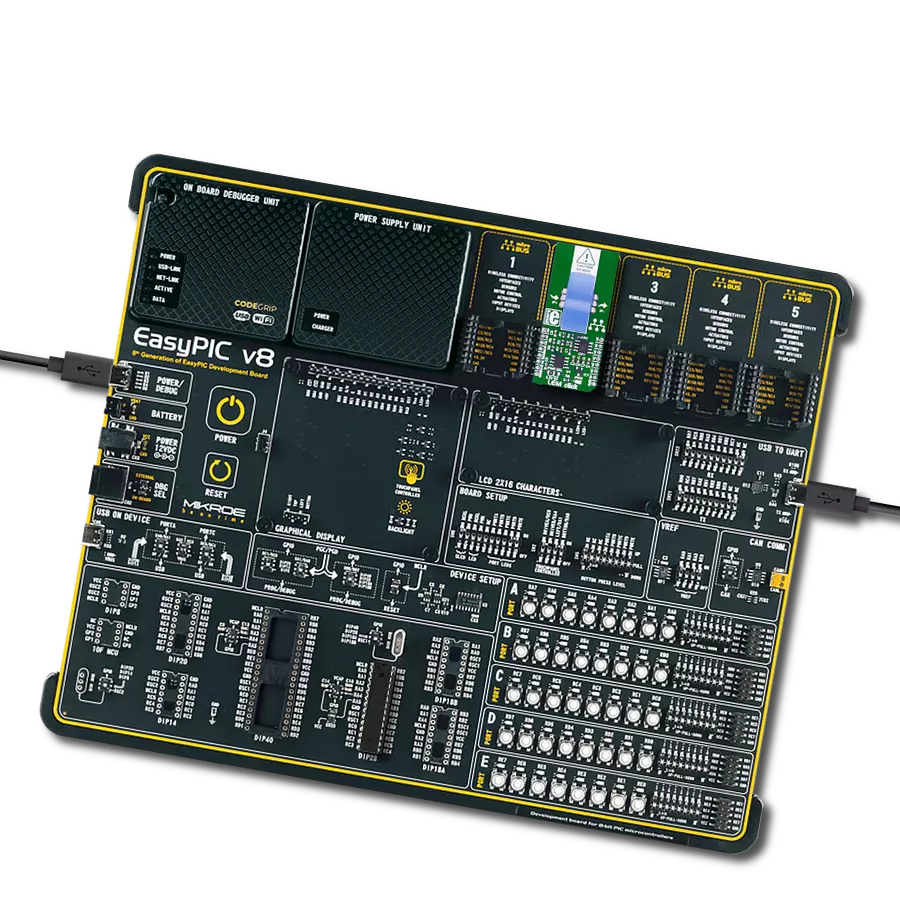Provides accurate output frequency proportional to its input voltage
A
A
Hardware Overview
How does it work?
V to Hz 3 Click is based on the AD7740, a CMOS synchronous Voltage-to-Frequency Converter (VFC), which uses a charge-balanced conversion technique from Analog Devices. The input voltage signal from 0V up to 5V from its VIN terminal is applied to a proprietary front-end based around an analog modulator that converts the input voltage into an output pulse train. Depending on the analog input value, the output frequency goes from 10% to 90% of the input frequency provided by the SPI-configurable LTC6903 programmable oscillator, with a maximum input frequency of 1MHz. The analog input signal to the AD7740 is continuously sampled by a switched capacitor modulator whose sampling rate
is set by a master clock (primary input frequency of the AD7740). The input signal may also be buffered, setting the BUF pin of the mikroBUS™ socket to a high logic state before being applied to the sampling capacitor of the modulator, isolating the sampling capacitor charging currents from the analog input pin. The AD7740 also contains an on-chip 2.5 V default bandgap reference, the reference input to the core of the AD7740 defining the span of the VFC. Alternatively, an external reference may be used to overdrive the internal reference by applying it to an onboard header marked as REFIN. Alongside SPI communication, this Click board™ also uses several additional pins. The BUF pin mentioned above represents the
Buffered mode selection, while the AN pin indicates the presence of an external analog signal. The last of the enabled pins is the F signal, routed to the INT pin of the mikroBUS™ socket, which can also serve as output frequency from the AD7740 in the same way as the FOUT terminal. This Click board™ can operate with both 3.3V and 5V logic voltage levels selected via the VCC SEL jumper. This way, it is allowed for both 3.3V and 5V capable MCUs to use the communication lines properly. However, the Click board™ comes equipped with a library containing easy-to-use functions and an example code that can be used, as a reference, for further development.
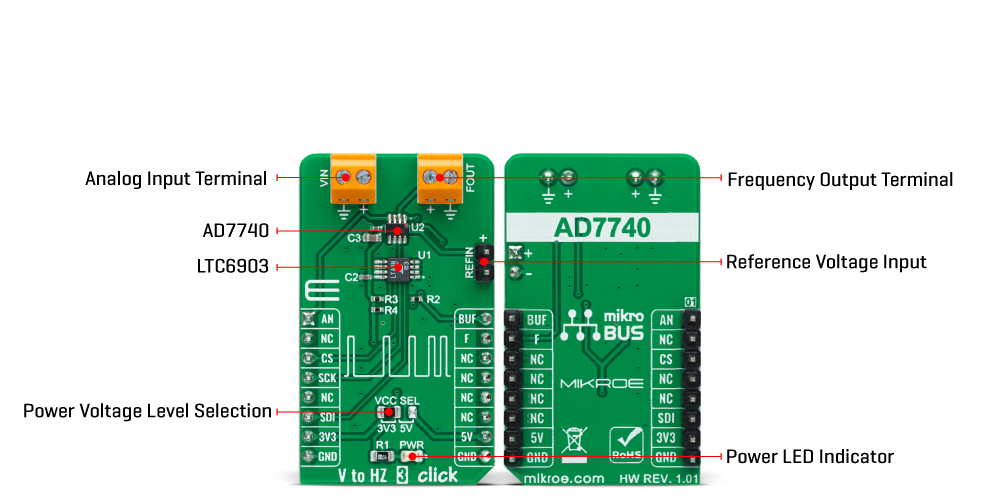
Features overview
Development board
EasyAVR v7 is the seventh generation of AVR development boards specially designed for the needs of rapid development of embedded applications. It supports a wide range of 16-bit AVR microcontrollers from Microchip and has a broad set of unique functions, such as a powerful onboard mikroProg programmer and In-Circuit debugger over USB. The development board is well organized and designed so that the end-user has all the necessary elements in one place, such as switches, buttons, indicators, connectors, and others. With four different connectors for each port, EasyAVR v7 allows you to connect accessory boards, sensors, and custom electronics more
efficiently than ever. Each part of the EasyAVR v7 development board contains the components necessary for the most efficient operation of the same board. An integrated mikroProg, a fast USB 2.0 programmer with mikroICD hardware In-Circuit Debugger, offers many valuable programming/debugging options and seamless integration with the Mikroe software environment. Besides it also includes a clean and regulated power supply block for the development board. It can use a wide range of external power sources, including an external 12V power supply, 7-12V AC or 9-15V DC via DC connector/screw terminals, and a power source via the USB Type-B (USB-B)
connector. Communication options such as USB-UART and RS-232 are also included, alongside the well-established mikroBUS™ standard, three display options (7-segment, graphical, and character-based LCD), and several different DIP sockets which cover a wide range of 16-bit AVR MCUs. EasyAVR v7 is an integral part of the Mikroe ecosystem for rapid development. Natively supported by Mikroe software tools, it covers many aspects of prototyping and development thanks to a considerable number of different Click boards™ (over a thousand boards), the number of which is growing every day.
Microcontroller Overview
MCU Card / MCU
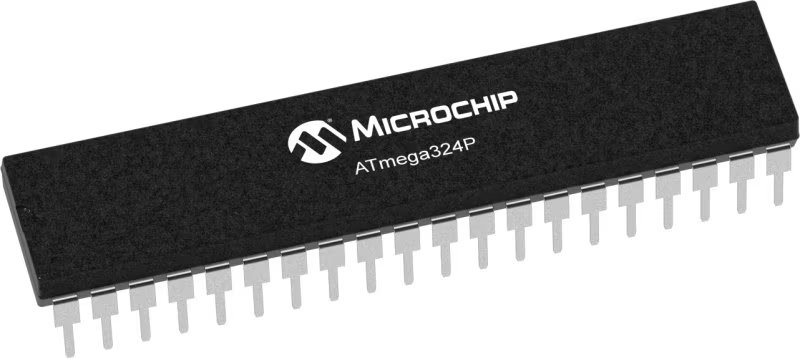
Architecture
AVR
MCU Memory (KB)
32
Silicon Vendor
Microchip
Pin count
40
RAM (Bytes)
2048
Used MCU Pins
mikroBUS™ mapper
Take a closer look
Click board™ Schematic

Step by step
Project assembly
Track your results in real time
Application Output
1. Application Output - In Debug mode, the 'Application Output' window enables real-time data monitoring, offering direct insight into execution results. Ensure proper data display by configuring the environment correctly using the provided tutorial.

2. UART Terminal - Use the UART Terminal to monitor data transmission via a USB to UART converter, allowing direct communication between the Click board™ and your development system. Configure the baud rate and other serial settings according to your project's requirements to ensure proper functionality. For step-by-step setup instructions, refer to the provided tutorial.

3. Plot Output - The Plot feature offers a powerful way to visualize real-time sensor data, enabling trend analysis, debugging, and comparison of multiple data points. To set it up correctly, follow the provided tutorial, which includes a step-by-step example of using the Plot feature to display Click board™ readings. To use the Plot feature in your code, use the function: plot(*insert_graph_name*, variable_name);. This is a general format, and it is up to the user to replace 'insert_graph_name' with the actual graph name and 'variable_name' with the parameter to be displayed.

Software Support
Library Description
This library contains API for V to Hz 3 Click driver.
Key functions:
vtohz3_set_input_frequencyThis function enables and sets the output frequency of the programmable oscillator, which is the AD7740 input frequency.vtohz3_read_an_pin_voltageThis function reads the results of the AD conversion of the AN pin and converts them to a proportional voltage level.vtohz3_get_frequencyThis function converts voltage to the estimated output frequency in Hz.
Open Source
Code example
The complete application code and a ready-to-use project are available through the NECTO Studio Package Manager for direct installation in the NECTO Studio. The application code can also be found on the MIKROE GitHub account.
/*!
* @file main.c
* @brief VtoHz3 Click example
*
* # Description
* This example demonstrates the use of the V to Hz 3 Click board by calculating
* the estimated output frequency from the input voltage.
*
* The demo application is composed of two sections :
*
* ## Application Init
* Initializes the driver and sets the input frequency.
*
* ## Application Task
* Reads the input voltage from AN pin and calculates the output frequency from it.
* The results are being displayed on the USB UART approximately once per second.
*
* @author Stefan Filipovic
*
*/
#include "board.h"
#include "log.h"
#include "vtohz3.h"
static vtohz3_t vtohz3;
static log_t logger;
void application_init ( void )
{
log_cfg_t log_cfg; /**< Logger config object. */
vtohz3_cfg_t vtohz3_cfg; /**< Click config object. */
/**
* Logger initialization.
* Default baud rate: 115200
* Default log level: LOG_LEVEL_DEBUG
* @note If USB_UART_RX and USB_UART_TX
* are defined as HAL_PIN_NC, you will
* need to define them manually for log to work.
* See @b LOG_MAP_USB_UART macro definition for detailed explanation.
*/
LOG_MAP_USB_UART( log_cfg );
log_init( &logger, &log_cfg );
log_info( &logger, " Application Init " );
// Click initialization.
vtohz3_cfg_setup( &vtohz3_cfg );
VTOHZ3_MAP_MIKROBUS( vtohz3_cfg, MIKROBUS_1 );
if ( SPI_MASTER_ERROR == vtohz3_init( &vtohz3, &vtohz3_cfg ) )
{
log_error( &logger, " Application Init Error. " );
log_info( &logger, " Please, run program again... " );
for ( ; ; );
}
vtohz3_set_input_frequency ( &vtohz3, VTOHZ3_DEFAULT_IN_FREQUENCY );
log_info( &logger, " Application Task " );
}
void application_task ( void )
{
float voltage;
if ( VTOHZ3_OK == vtohz3_read_an_pin_voltage ( &vtohz3, &voltage ) )
{
log_printf( &logger, " Voltage : %.2f V\r\n", voltage );
log_printf( &logger, " Output frequency : %lu Hz\r\n\n",
vtohz3_get_frequency ( &vtohz3, voltage, VTOHZ3_VREF_INTERNAL_2V5 ) );
}
Delay_ms ( 1000 );
}
int main ( void )
{
/* Do not remove this line or clock might not be set correctly. */
#ifdef PREINIT_SUPPORTED
preinit();
#endif
application_init( );
for ( ; ; )
{
application_task( );
}
return 0;
}
// ------------------------------------------------------------------------ END
Additional Support
Resources
Category:Measurements
